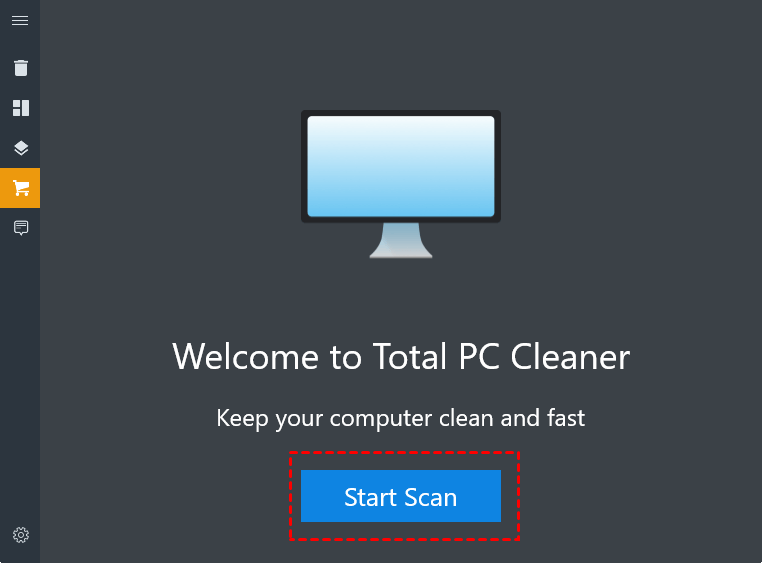How to Delete System Junk Files in Windows 10 (Available for Windows 11)
When the system disk is almost full, it is necessary to clean up the system junk files, which can make the computer run faster. This tutorial will show you how to delete system junk files in Windows 10 and 11.
Why we should delete system junk files?
What? You still do not know the importance of deleting system junk files? Deleting system junk files is a common topic when talking about what keeps computers in good condition. If you are confused, please don't miss this article.
The longer you use the computer, the more system junk files it accumulates, such as duplicate files, temporary files, registry files, etc. Deleting system junk files on a regular not only free up disk space for storing more data, but also makes your computer running faster.
How to delete system junk files in Windows 10, 8, 7, and 11
To delete system junk files successfully, there are 4 options you can choose, including Microsoft Total PC Cleaner, Disk Cleanup, a third-party junk files cleaner, and built-in Storage feature.
▶ Option 1. Microsoft Total PC Cleaner
You can get Microsoft Total PC Cleaner for free from the Microsoft Store. It works on Windows 10 and above, and is designed to clean up system junk files including caches and downloads for users, speeding up the PC.
Step 1. Install Microsoft Total PC Cleaner on your Windows 10 PC. After opening, you will see the main interface, then click "Continue".
Step 2. Here, select the system partition (usually C drive). Click on "Select Folder".
Step 3. After that, a new window will pop up. Click "Start Scan" to run the tool.
Step 4. Wait for a while, the scan results will be listed. You can click “Clean” to delete system junk files.
▶ Option 2. Disk Cleanup
Disk Cleanup is a Windows built-in tool that can delete Windows 10 junk files without installation. It supports cleaning junk files on different drives, if you have too many junk files on your system disk, it is a good choice to turn to this utility for help.
Step 1. Click“This PC” on the desktop.
Step 2. Right-click the system disk and select“Properties”.
Step 3. Click Disk Clean-up under General option.
Step 4. Check the junk files and click“OK”.
▶ Option 3. Free system junk files cleaner
How to clean up system junk files on Windows 10, 8, 7, and 11? You can also try AOMEI Partition Assistant for Cleanup. This is a completely different tool from other tools on the market. Because it can fully scan the junk files in the computer, including system junk files and registry junk files. After the scan, all junk files are automatically classified. You just need to click "Clean All" to remove them.
Free Up Disk Space To Keep Your PC Running Smoothly and Efficiently
Step 1. Install and launch AOMEI Partition Assistant for Cleanup. Click the "Clean Junk Files" tab.
Step 2. Click the "Scan Now" button to start the process of scanning junk files.
Step 3. After the scan process is finished. All system junk files (including recycle bin files, temporary files, log files, invalid shortcuts, and so on) and registry junk files (including DLL registry, system registry, and program registry) will be displayed.
You can also click the button behind to view the junk files details.
Step 4. And, you can click the button behind to locate the file.
By default, the program will select some junk files to clean up, for example, temporary files, log files, and so on. You can also manually check to select more or uncheck to deselect fewer listed junk files. Or, click "Select All" to select all junk files to clean up if you need to clean up all.
Step 5. After selecting junk files that are not needed anymore, you can click the "Clean Now"button to start the cleanup.
The process of the cleanup might take time, and the selected files will be cleaned up. After the process is finished, you will get a cleanup completed window displaying how many files you have cleaned and not yet cleaned.
▶ Option 4. Storage feature
For Windows 10 and above users can also try to use Storage to clean up system junk files, but it only includes temporary files.
Step 1. Open start bar and turn to "Settings" > "System" > "Storage".
Step 2. After that, click“Temporary files”.
Step 3. Then, click“Remove files”to remove all temporary files.
Conclusion
This is the ultimate guide of how to delete system junk files in Windows 10 and other OS, because this article provides 4 different options to delete system junk files.
There is no doubt that AOMEI Partition Assistant for Cleanup is the only one which can delete system junk files fully. More importantly, it provides you other features to manage disk partitions flexibly and timely.




